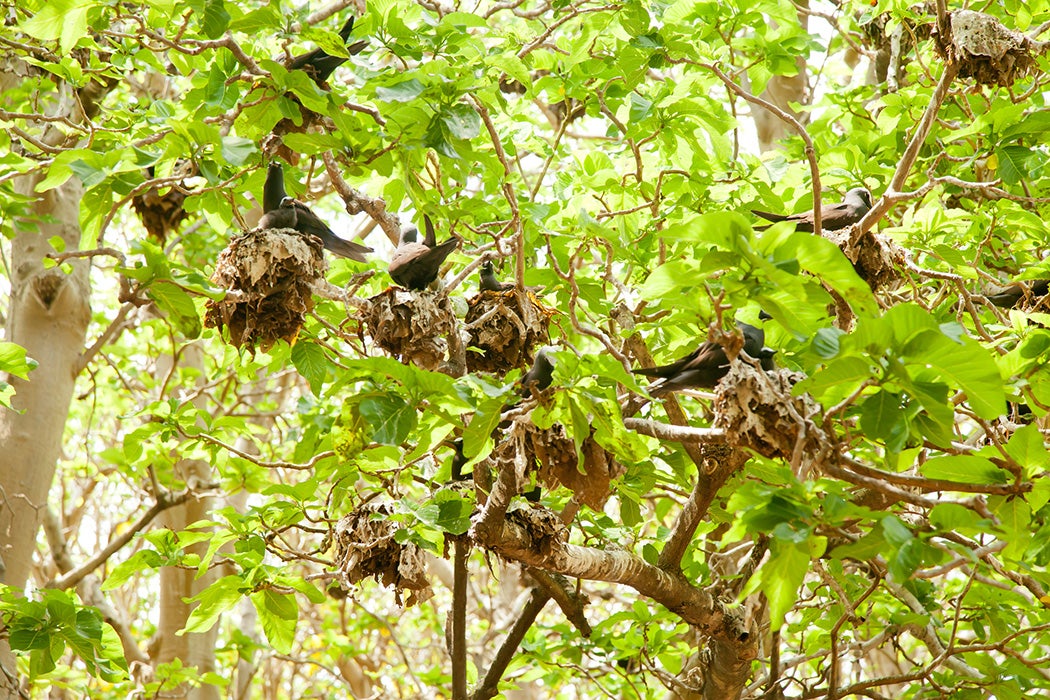Trees of the genus Pisonia are not your average tree. They seem like something that would be at home in Middle Earth, or maybe Harry Potter’s wizarding world. The genus is not fully understood, even as new species are periodically discovered. Found in tropical habitats, mainly islands in the Caribbean and Indo-Pacific, Pisonia trees resemble any typical large, tropical tree. Typical, that is, until you notice the bones.
Pisonia trees are faced with a conundrum. Dispersing seeds any distance requires transporting them to other islands. But how? They hijack birds. Most Pisonia trees, especially Pisonia Grandis in the Indo-Pacific region, are found almost exclusively on islands that host large colonies of seabirds such as terns, noddies, or boobies. The birds nest nearby, or even in, the trees. The trees, in turn, flourish in the special soil made acidic by copious guano deposits.
The birds get the worse end of this deal. Pisonia trees produce extremely sticky seeds, which grow in large and tangled bunches. The bunches may be all over the tree, so a bird flying near or through a tree will likely brush against a bunch of the the sticky seeds. Large numbers of the seeds stick to the bird’s feathers, and they are so sticky that it is difficult for the birds to remove them. Eventually the seeds fall off, ideally once the bird has travelled to another island, thereby dispersing the seeds.
But what seems like a fairly benign evolutionary relationship sometimes has dire consequences. Frequently, a bird contacts a bunch of the sticky seeds and becomes trapped, unable to move or fly. During really dense seed years it’s a common occurrence. The unfortunate bird, if unable to free itself, will soon die. Others become so laden down with seeds that they can’t fly. White-tailed tropic birds and white terns seem especially susceptible. When a carcass falls to the ground, it is typically scavenged but sometimes Pisonia trees have an ominous pile of bones at their base.
Does the tree derive any advantage from killing birds? Apparently not. A dead bird will not successfully transport a viable seed from one island to another. Only a living bird provides adequate dispersal services. Controlled experiments did not show any enhanced germination of seeds attached to carcasses, and the nutrients a carcass may provide are nothing compared to a mass of guano.
For their part, the birds get a place to nest (which could be provided by a less lethal tree) and little else. Seabirds don’t eat the seeds. The birds seem to end up as collateral damage to the Pisonia’s dispersal strategy, and the incidence of mortality is not high enough for the birds to evolve a defense. Evolutionary relationships do not always provide mutual advantage.







